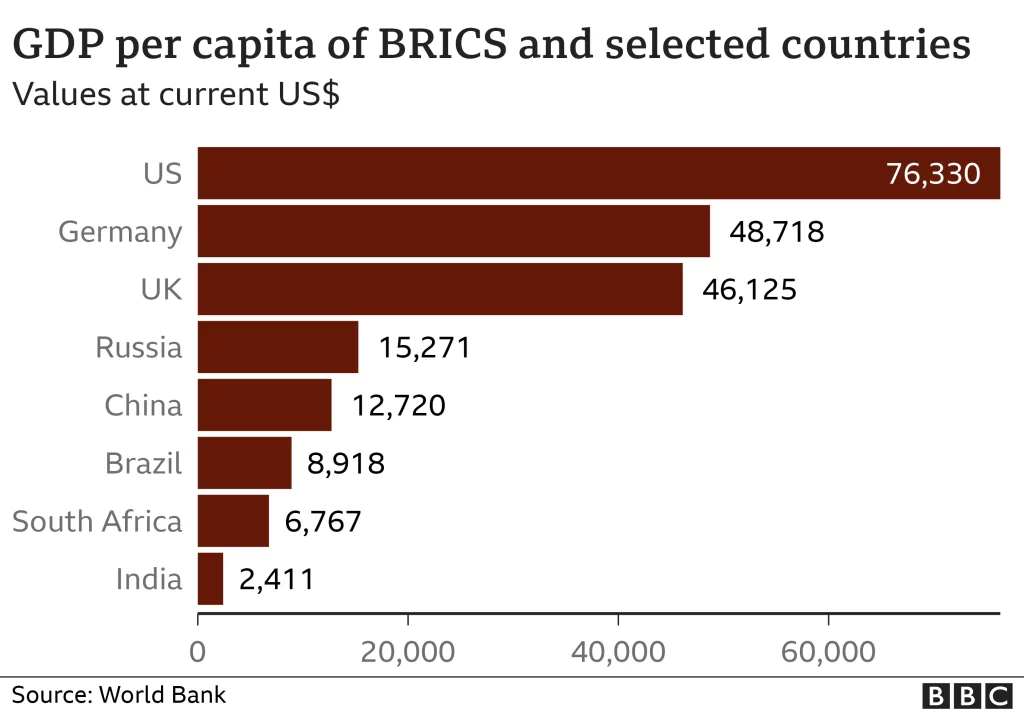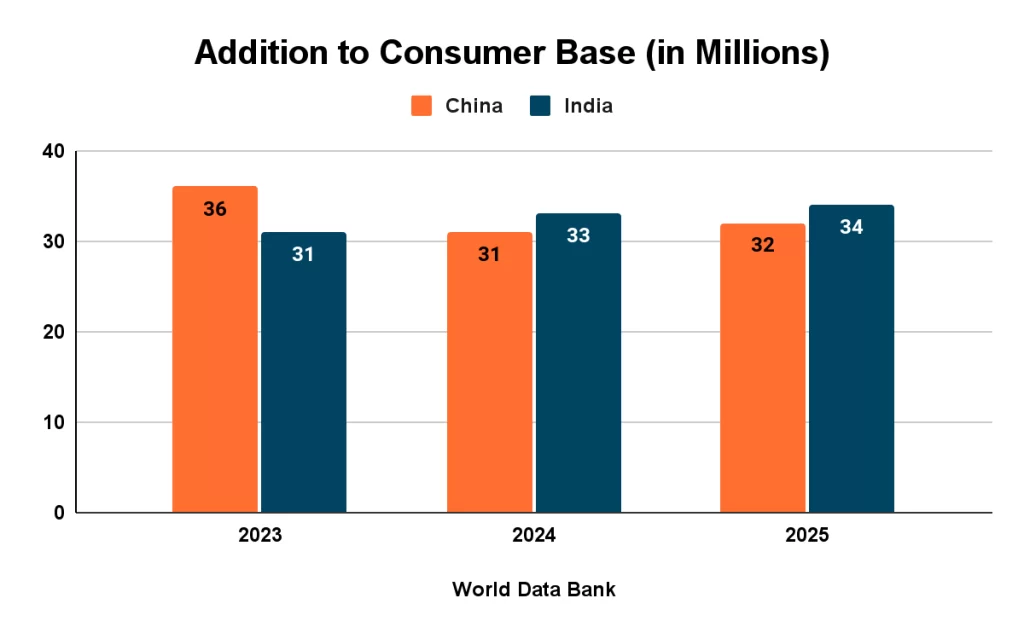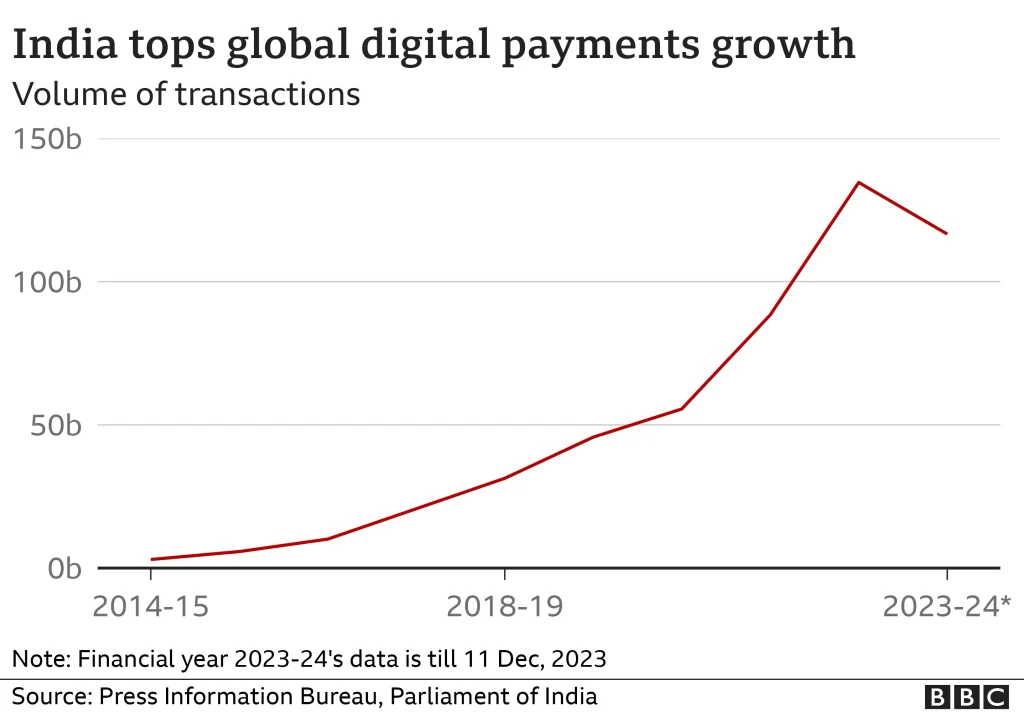On 15th August, 2024, in his 11th Independence Day Speech from Red Fort, Prime Minister Narendra Modi presented his vision for India’s future, encapsulated in the slogan ‘Viksit Bharat 2047’. He is quoted to have said, “This is a ‘Golden Era for Bharat’ in terms of opportunities, despite gloomy global conditions”. Modi’s vision includes robust economic growth, self-reliance, technological advancement, military modernization, and environmental sustainability. But how much progress has India made under Modi’s leadership, and what do the numbers say?

Economic Growth & Self-Reliance (Atmanirbhar Bharat)
One of Modi’s most significant initiatives is Atmanirbhar Bharat Abhiyaan (Self-Reliant India), introduced in 2020 with a package of ₹20 lakh crore, nearly 10% of India’s GDP. Its goal is to reduce dependence on imports, strengthen local manufacturing, and position India as a global supply chain hub. Since the launch, India’s economic trajectory has been promising. In 2022, India surpassed the UK to become the fifth-largest economy, and analysts predict that by 2027, it could overtake Japan and Germany to become the third-largest economy .
This economic surge follows a decade of reforms aimed at stabilising the economy. When Modi took power in 2014, India was grappling with declining growth and a fragile banking system burdened with bad loans. Today, India’s growth rate is outpacing many major economies, and the banking sector has regained strength, despite the challenges posed by the COVID-19 pandemic.
Infrastructure Development and Digital Economy
The Gati Shakti program, launched in 2021, aims to streamline and accelerate large-scale infrastructure projects, targeting the development of roads, railways, ports, and airports across India. This ambitious project involves coordinating 16 ministries to ensure that infrastructure projects are completed faster and more efficiently, avoiding bureaucratic delays. With a goal of building 25,000 kilometers of national highways and modernizing 100 new cargo terminals by 2025, Gati Shakti is set to transform India’s logistical and transportation capabilities
Parallel to physical infrastructure, the Digital India initiative is transforming India into a digitally empowered society. Since its inception in 2015, this program has focused on building a robust digital infrastructure, ensuring governance through technology, and empowering citizens with digital literacy. Digital India initiative has been a cornerstone of his vision, aiming to create a digitally empowered society. Since its launch in 2015, the program has not only expanded digital infrastructure but also promoted services like
DigiLocker and the Pradhan Mantri Grameen Digital Saksharta Abhiyan (PMGDisha), which has trained over 47 million people in rural areas .
Between 2021 and 2026, the Digital India initiative has been extended with a budget of ₹14,903 crore to strengthen infrastructure and make governance more accessible. The expansion of digital services is critical for driving economic growth, improving service delivery, and ensuring that the benefits of the digital economy reach even the most remote corners of the country.

AI and Space Exploration
India is also positioning itself as a global technology hub by investing heavily in artificial intelligence and space exploration. In 2024, India approved an investment of ₹103 billion to develop AI infrastructure and fund startups, with projections showing that India’s AI market could reach $17 billion by 2027. On the space front, Modi’s government has overseen groundbreaking achievements. The Cabinet recently approved funding for four major space missions, including Chandrayaan-4, the Venus Orbiter Mission, and the creation of India’s first indigenous space station . These initiatives not only boost national pride but also reinforce India’s standing as a leader in space technology.

Geopolitical Strategy and Defence Modernization
India’s global ambitions are reflected in its proactive diplomacy and defence strategies. Under Modi, India has enhanced its role in international organisations such as the G20 and BRICS, hosting critical summits and spearheading the inclusion of the African Union in the G20. Defence modernization has been a priority, with India diversifying its arms imports and focusing on indigenous production .
India remains the world’s largest arms importer, sourcing weapons from countries like Israel, Russia, and France. The push toward self-reliance in defence is evident in partnerships like that between Israel’s Elbit Systems and India’s Adani Group to manufacture drones domestically.
Sustainability and Energy Independence
Under Prime Minister Modi, India has made significant strides in transitioning towards cleaner energy sources, with ambitious targets to generate 500 GW of renewable energy by 2030. Initiatives like the National Solar Mission have made India one of the world’s largest producers of solar energy, while the country is also investing heavily in wind power, electric mobility, and green hydrogen technologies. The International Solar Alliance, spearheaded by India, highlights its leadership in global climate initiatives, further bolstering its energy security. India is making significant strides in the field of green energy, collaborating with the U.S. on joint research in areas like telecommunications and intelligent transport systems. Multilateral partnerships with organisations like the World Bank and Asian Development Bank have further propelled India’s renewable energy projects .

Comparison With China
India’s aspirations to become a global superpower by 2047 are often viewed through the lens of its competition with China, the world’s second-largest economy and a rising geopolitical force. As of 2024, India surpassed China to become the most populous country, a demographic shift that has significant economic implications for both nations. While China’s population is ageing, leading to a declining workforce and rising dependency ratios, India’s population is relatively younger, positioning it to capitalise on a demographic dividend. However, for India to fully exploit this advantage, it must address challenges like unemployment, low real wage growth, and the need for skill development. China’s rapid ascent over the past few decades was fueled by aggressive industrialization, export-led growth, and large-scale infrastructure development, which lifted hundreds of millions out of poverty. In contrast, India’s growth trajectory, while impressive in recent years, has been more gradual and is still marred by regional inequalities and bureaucratic red tape.
On the economic front, China and India are both global powerhouses, but they operate on different scales. In nominal terms, China is the second-largest economy, and India ranks fifth, though India is projected to surpass Germany and Japan by 2027 to secure the third spot. On a purchasing power parity (PPP) basis, China leads globally, while India holds the third position. Together, the two countries account for over 40% of the global population and a substantial share of global GDP. However, China’s infrastructure, manufacturing, and export sectors are far more developed, contributing significantly to its global economic dominance. India’s economy, while growing rapidly, remains dependent on service sectors like IT, which are less labour-intensive and leave much of the population employed in informal, lower-wage jobs.
Prime Minister Modi’s vision of a “Viksit Bharat 2047” is ambitious and multi-faceted, combining economic reforms, technological advancements, defence modernization, and sustainability efforts. The past decade has seen India strengthen its position as a global player, with impressive growth statistics and successful programs like Atmanirbhar Bharat and Digital India. However, challenges such as inequality, unemployment, and bureaucratic inefficiencies remain obstacles to realising this superpower dream. As the nation looks towards 2047, sustaining growth, fostering inclusivity, and leveraging technological advancements will be key to achieving Modi’s vision.
Written by Prisha Khemka
Edited by Sualiha Khan
